Tables
|
Topics: |
Tables represent all available entities (for example, Patient Master, its Addresses, Provider Master, and so on).
Table List
The list of all tables is displayed on the Table List page, as shown in the following image.
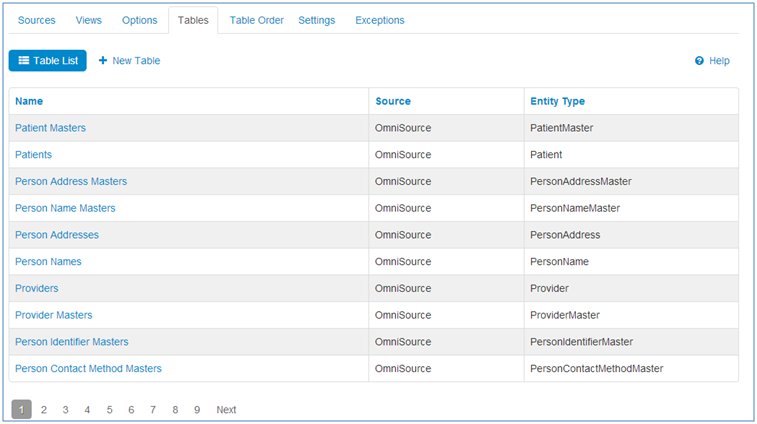
Show Table
When administrators select a table from the list, the Show Table page is displayed. This page contains information about the selected table, as shown in the following image.

Creating a New Table
Administrators can create a new table on the New Table page by clicking the corresponding button on the Show Table page.
The New Table page contains the following sections:
- Table properties
- Table options
- View tabs
- Included columns
- Include all/Exclude all buttons
- Excluded columns
Columns can be added in the Included section by dragging and dropping, or deleted by clicking the "x" icon.
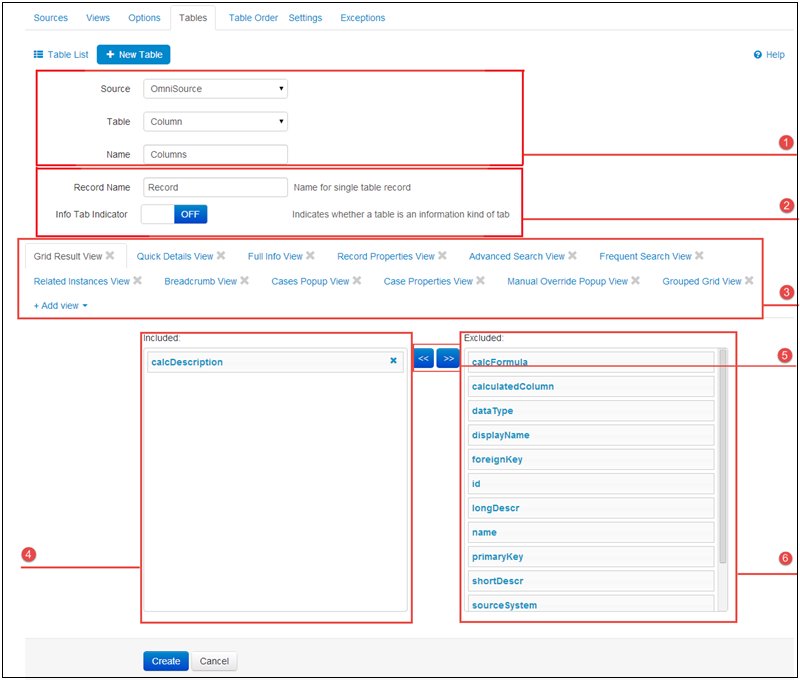
Some views have groups/sub-groups/sections. To create a new group/sub-group/section, administrators should choose the appropriate value from the drop-down list (if the view allows having groups/sub-groups/sections), type the name, and then press Enter.
Groups allow administrators to unite columns.
Sub-group is used to display a key-value pair, which is why a sub-group must contain two columns.
A section is an additional grouping in the group.
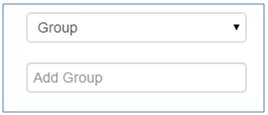
For example, the Patient Master table has groups (1) and subgroups (2) in the Quick Details View.
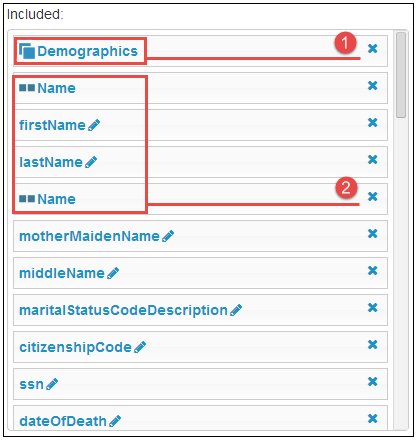
The following image shows the Advanced Search dialog.
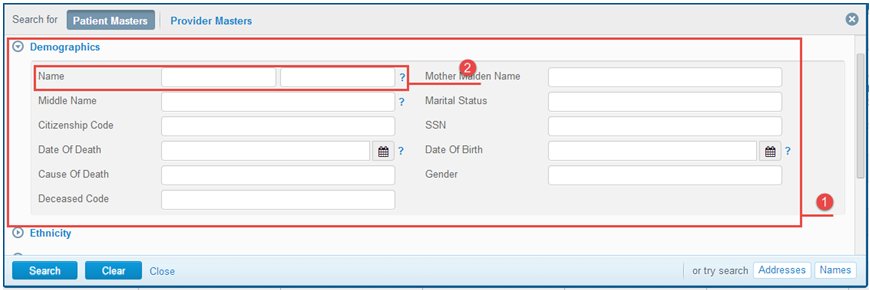
Created items are validated before they are updated to the table. Sub-group tags must contain two columns. In addition, the Grid Result View must have at least one column included. If validation fails, an appropriate message is displayed and the table is not updated.
View tabs can be closed and restored from +Add view drop-down list, as shown in the following image.
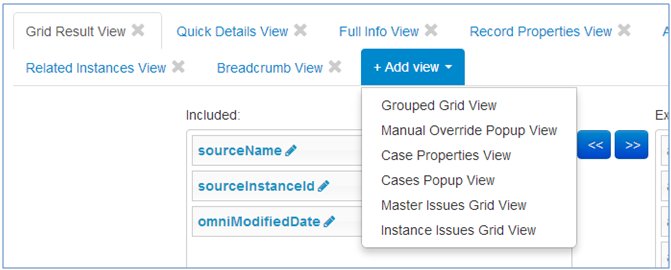
Editing a Table
The Edit Table page looks similar to the New Table page. To navigate to the Edit Table page, administrators must select a table from the list and click the Edit Table button. Note that the Source and Table fields cannot be edited. Administrators can enable the Info Tab Indicator to represent Info tabs for a particular table.
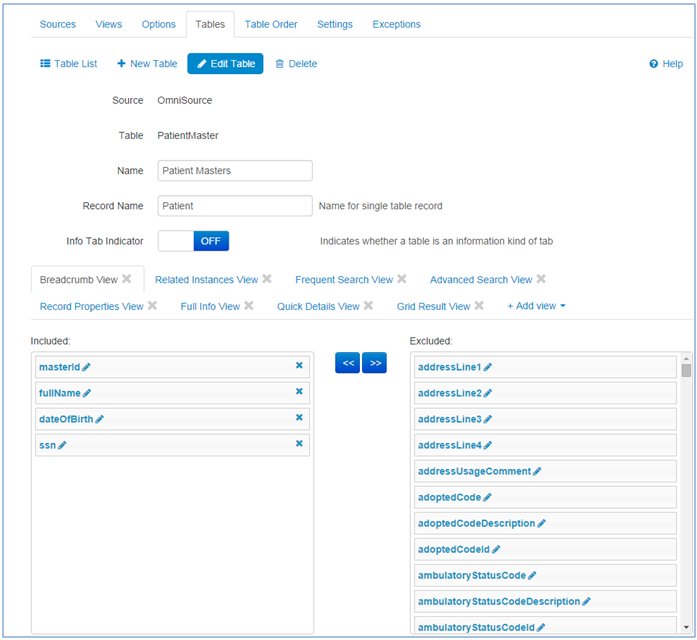
Some views have links. The Links section is displayed after the Columns section.

Columns and links can be added in the Included section by dragging and dropping, or deleted by clicking the "x" icon. Tables displayed in the Links section are represented within the application as subdomains/sub-sub domains.
When new options for a View are created, they are displayed on the corresponding View tab after the Columns and Links sections.
For example, the following image shows Default Filtering on the WF User Cases table.
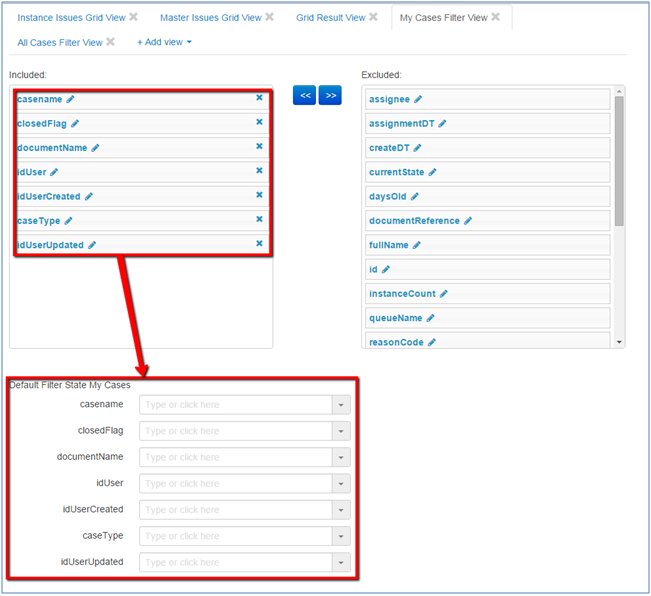
Columns that are placed in the Included section of the My/All cases filter view are displayed in the Default Filtering section as well. If a column is moved to the Excluded section, the column will automatically disappear from the Default Filtering section.
The administrator can select any required value for the field from the drop-down list. Or the administrator can start typing within the field itself to view results that satisfy the filtering criteria.

More than one value can be selected for one field if required.
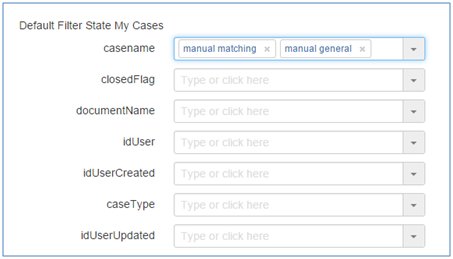
After the required values are set, the administrator can click Update to apply the changes.
Editing a Column
Columns can be edited from the Edit Column page, by clicking on the pencil icon for a corresponding column in the table.
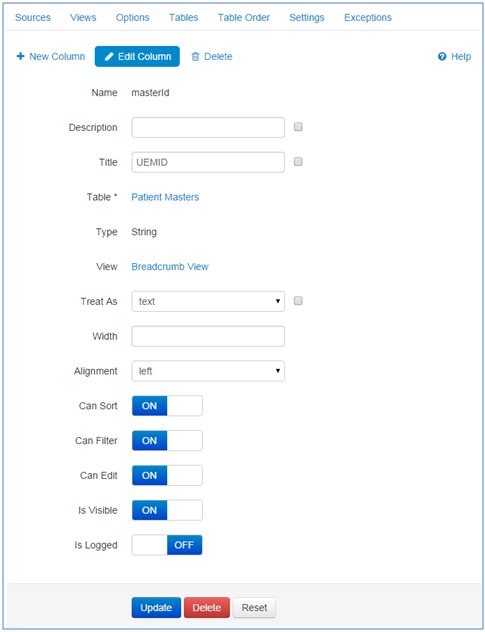
Several fields, such as Name, Table, Type, and View are not available for editing. The Table and View fields are hyperlinks to corresponding items.
In addition, it is possible to create or delete a current column by clicking the corresponding button.
Global Column Editing
There is an Update in all views check box near some fields on the Edit Column page. When selected, the appropriate column will be updated in all views for the corresponding table. For example, if an administrator changes a description in the Patient Masters table with this option selected, then the description will be changed in all views for the Patient Masters table.

Editing a Link
Links represent sub-domains. Links are used, for example, in the Advanced Search dialog. They allow searching by sub-domain parameters of a record. Links are laos used on the Details 360 page, where they display sub-domain tabs.
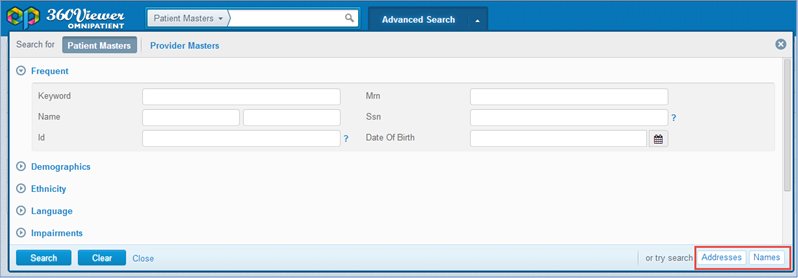
Link can be edited from the Links section on the Edit Table page, by clicking on the pencil icon.
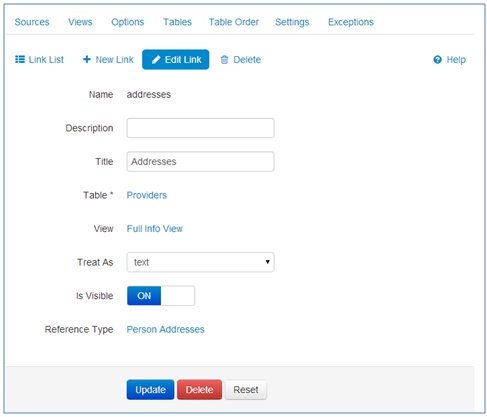
Several fields, such as Name, Table, Type, and View are not available for editing. The Table and View fields are hyperlinks to corresponding items.
In addition, it is possible to create or delete a current link by clicking the corresponding button.